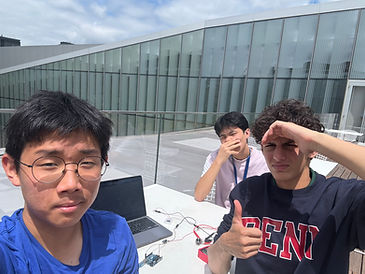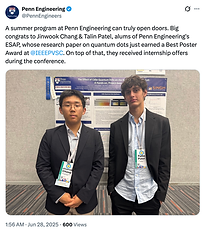
The Effect of CdSe Quantum Dots on Calibrate Solar Cells
Traditional solar cells suffer from efficiency limitations due to their inability to fully utilize the solar spectrum. In fact, most traditional silicon solar cells have a limited efficiency of only 15–18%, with a lower absorption coefficient and untunable band gaps.
However, quantum dot solar cells make use of the "lost solar spectrum."
The following section includes my award-winning research at the IEEE conference and QuantaSol predictive API model to calculate the best locations for QD solar cells in regions sun-rich, solar-poor.


Our Research Journey




















Acknowledgements
I’d like to thank Dr. Gyuseok Kim at the Singh Center for Nanotechnology, University of Pennsylvania, for supporting the idea of the research. I’d like to thank Mr. Gregory Rose and the Shanghai American School for supporting the further development of the project-based learning element. I’d like to thank Talin Patel, Steven Li, and Bowen Hou, my partners at the Engineering Summer Academy at Penn, for helping me draft the paper and collaborating on this project.





QuantaSol GeoSpatial Site Optimization Model
In many sun-rich, solar-poor regions between the tropics, abundant UV irradiance accelerates the degradation of traditional silicon solar cells, limiting their performance and lifespan. Despite high solar potential, these areas remain underserved by conventional technology.
Quantum dot solar cells provide a solution by converting harmful UV light into usable energy, extending durability and boosting efficiency where sunlight is most intense.
Through the QuantaSol predictive API model, we integrate factors such as irradiance, slope, aspect, and regional socioeconomic scores to pinpoint the best locations for QD solar farms—turning overlooked tropical sunlight into a reliable and profitable source of clean energy.










Acknowledgements
I’d like to thank Ryan Jiang from Shanghai American School, the main collaborator of the QuantaSol model development
Reach Out for Any Science Project Inquiries
258 Jinfeng Road,
Minhang District,
Shanghai, China 201107


